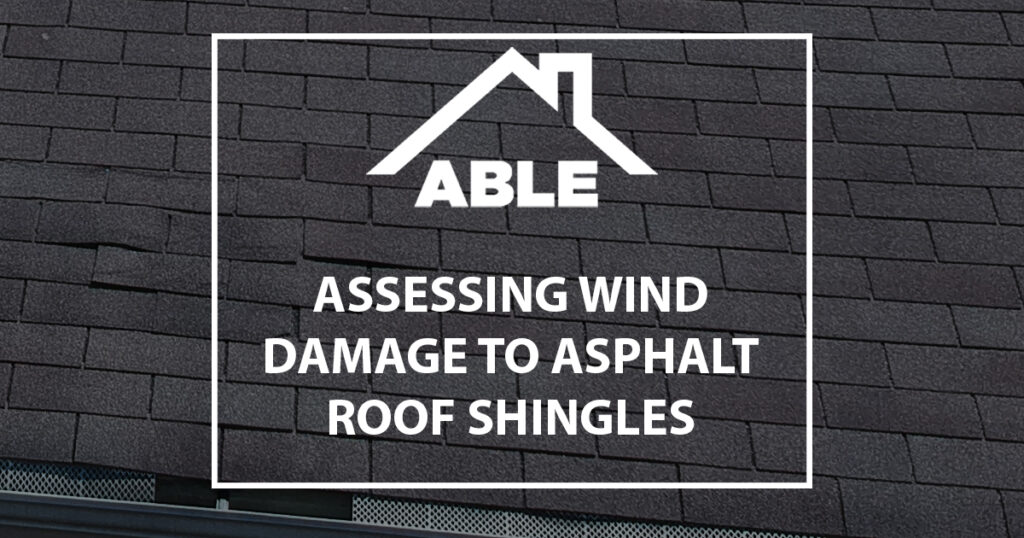Your roof can withstand a wide variety of weather conditions for many years before needing to be repaired or replaced. Over time, it will endure storms, heat, snow, and strong winds. These weather conditions along with other factors such as debris will eventually cause wear and tear, and wind damage is one of the most common ways roofs are damaged.
Strong winds can cause asphalt shingles to bend, detach, and go missing, so you need to know how to assess your roof for damage.
How Do Manufacturers Make Asphalt Roof Shingles?
 Asphalt roofing is one of the most popular choices for its affordability, ease of installation, and style. Shingles are created using a sealant, asphalt, Fiberglass, more asphalt, and granules. They are designed to withstand variations in temperature and weather. There are different levels you can choose from, and the higher quality shingle you choose the more wind resistant it will be.
Asphalt roofing is one of the most popular choices for its affordability, ease of installation, and style. Shingles are created using a sealant, asphalt, Fiberglass, more asphalt, and granules. They are designed to withstand variations in temperature and weather. There are different levels you can choose from, and the higher quality shingle you choose the more wind resistant it will be.
How Does Wind Damage Asphalt Shingles?
When strong winds last for a minute or longer, it distresses the shingles and will start to damage the roof. The area where damage is most likely is the perimeter of the roof. The center of the roof can also sustain damage, but usually faces slightly less wind pressure than the perimeter of the roof does.
When wind moves across the roof, it can bend, detach, and pull off shingles completely. This depends on the direction, speed, and duration of the wind. For instance, if there is a windstorm, tornado, or hurricane, the strong winds can damage or destroy roofs.
Winds also blow around debris that can land on roofs. Depending on the type of debris, asphalt shingles can become punctured or scratched, requiring repairs or replacement shingles. Tree branches will puncture and scuff roofs; pieces of glass and miscellaneous objects can also damage asphalt shingles.
Other Causes of Wind-Related Asphalt Shingle Damage
 Strong winds will normally damage asphalt roofs over time, but some other factors can contribute to a roof wearing down faster as well. If someone improperly installs the roof, it will be more susceptible to damage. If shingles are poorly bonded together and aren’t secure enough, it’s easier for winds to bend or lift them.
Strong winds will normally damage asphalt roofs over time, but some other factors can contribute to a roof wearing down faster as well. If someone improperly installs the roof, it will be more susceptible to damage. If shingles are poorly bonded together and aren’t secure enough, it’s easier for winds to bend or lift them.
Types of Wind-Related Asphalt Roof Shingle Damage
When shingles do not adhere to the roof, it’s easy to remove them manually. Over time, some shingles may become completely unattached, and some may become partially detached. This is because of winds lifting the shingles and weakening the bonds to the roof over time.
Wind uplift often causes bent shingles, and they can bend in more than one direction depending on the speed, direction, and strength of the wind. Over time, asphalt shingles become weaker because of the repeated bending.
Shingles can go missing when winds weaken the bonds. Improper installation can also cause this because it will fail to keep the wind from lifting the shingles. Noticing these types of damage signals that it’s time to repair or replace an asphalt roof. If you find wind damage to your asphalt roof or want to find out if there is damage to the roof, Able Roof professionals will be happy to look at it and give you an estimate for replacing your roof, whether you want to use asphalt, slate, wood, or tile.








